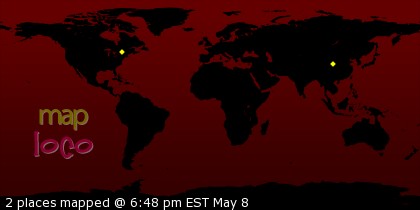So yesterday I taught a 3 hour workshop on writing combat scenes for fantasy. This is a meet-the-weapons deal where I bring in swords and knives and things so that my students can get some real idea of how things like look and feel with a big Q&A component to tailor the content toward what the people who attend are actually writing.
I love doing these things both because I did a variety of western and eastern martial arts when I was younger and because I invariably learn things. I'm a good generalist on muscle powered combat, and not a tightly focused specialist so at least one of my students always has a more in-depth take on some of the esoterica than I do. So, for example I had a couple who'd been doing research on traditional Native American missile weapons, and who could say that the Native Americans that they'd been studying used a string grip style much more like the Asian thumb ring model than the European three finger grip which I did not know. Cool stuff.
But perhaps of more interest is what the questions tell me about what's important to my students as writers and readers. I always get a lot of questions about what to emphasize in a fight scene, how much detail to go into, level of gore, things like that. My answer on all of those btw: is that it's a mix of two things
1—giving the reader an accurate picture of what they're looking at.
2—Showing the reader what's important to the character about what they're seeing.
My main point though is always this: Story is king. Accuracy and reality are important, because some subset of people will know when you make mistakes and it costs you in the willing suspension of disbelief area that is so critical for keeping your readers in the story. But reality is less important than story. It's important that you know the rules not because you must never break them, but because you need to know when you're breaking them and decide whether doing so does something that important enough for the story to make it worth the break.
More later.
Sunday, October 15, 2006
Subscribe to:
Post Comments (Atom)





5 comments:
Amusingly enough, I just picked up a working replica of a 13th Century longsword today, mainly for purposes of doing more combat classes at cons like we've done in the past. (Okay, I'm going to be using it on water-filled soda bottles for cutting practice, too, but that's a side benefit :).
It's always fun to see someone's eyes go big when they handle a sword (even a large one) and are amazed at how light and well balanced it can be. :) Ditto for when they start to realize just how much study and care and science was put into western martial traditions.
As for writing combat itself: I generally advise "think verb." Combat is active, and that needs to be portrayed in the actions, thoughts and pace of the scene. It doesn't need to be frenetic or non-stop, but pauses for long, philosophical dialogues are (usually) right out. :)
I appreciate your work here. I am a SF writer and finding creative, like-minded people can be difficult.
Keep up the good work.
Doug, I've been trying to convince Laura that the writing combat stuff justifies me picking up a combat ready rapier, or at least the really nice sword cane I saw at Convergence this last year. So far no luck.
Zebby's Daddy, thanks for the props. Glad you appreciate it.
Enabling? Please. I have friends who make swords for a living. Don't talk to me about enabling someone to buy a sharpened piece of steel. :D
My problem with writing violence has always been a tendency to get into too much detail. Like you, I've studied a lot. I've also choreographed a lot, and I tend to get right into the nitty gritty bits of the moments.
As you said, though, serving the story is the main thing and no fight is so interesting that every cut and thrust should be gone into in great detail (unless the fight is one move long).
Plus, fights are about confusion as much as anything else. It's very difficult for anyone in a fight to track what's happening in their won fight, let alone the ones around them. If I'm telling of a battle from a character point of view, I need to keep in mind that, generally, those in a battle have no idea what's going on more than a few feet away.
So, when I write fights, it's generally with the full knowledge that I'll have to edit them down in the next draft.
Post a Comment